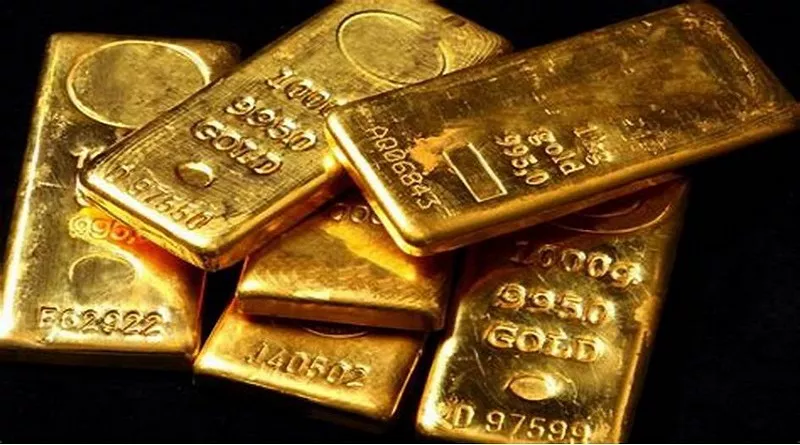The relationship between the U.S. dollar and gold prices has been a subject of interest for economists, investors, and financial experts for decades. One of the most intriguing aspects of this relationship is its inverse nature. When the U.S. dollar strengthens, gold prices tend to weaken, and vice versa. To understand why this inverse relationship exists, we need to delve into the intricate dynamics of international currency markets, monetary policies, and the historical significance of gold. In this article, we’ll explore the reasons behind the inverse relationship between the U.S. dollar and gold prices and address frequently asked questions to shed more light on this complex phenomenon.
I. The Basics of the Inverse Relationship
To grasp the inverse relationship between the U.S. dollar and gold prices, it’s essential to comprehend the fundamentals at play. Gold is often viewed as a store of value and a hedge against economic uncertainty. When investors perceive a higher level of risk in financial markets or a weakening economy, they tend to flock to gold as a safe haven asset. This increased demand for gold drives up its price.
Conversely, the U.S. dollar is considered the world’s primary reserve currency, and its value is closely tied to the health of the U.S. economy. When the U.S. economy is robust, the U.S. dollar tends to strengthen, making it more attractive to investors. As a result, they may move their investments out of gold and into the U.S. dollar or dollar-denominated assets. This shift in demand can lead to a decrease in gold prices.
II. The Impact of Monetary Policy
Monetary policy plays a significant role in shaping the inverse relationship between the U.S. dollar and gold prices. Central banks, including the U.S. Federal Reserve, use monetary policy tools like interest rates to influence economic conditions. When the Federal Reserve raises interest rates, it often strengthens the U.S. dollar as higher rates make dollar-denominated assets more appealing to investors seeking yield.
A stronger U.S. dollar can exert downward pressure on gold prices because it makes gold, which is priced in dollars, more expensive for international buyers who use other currencies. Consequently, higher interest rates and a stronger dollar can act as headwinds for gold prices.
III. The Historical Connection
The historical connection between gold and the U.S. dollar dates back to the Bretton Woods Agreement of 1944. Under this international monetary system, the U.S. dollar was pegged to gold, and other currencies were pegged to the U.S. dollar. This fixed exchange rate system lasted until 1971 when President Richard Nixon announced the suspension of the U.S. dollar’s convertibility into gold.
Following the end of the Bretton Woods system, the U.S. dollar remained the world’s dominant reserve currency, and gold continued to be a crucial component of global monetary systems. However, the decoupling of the dollar and gold created a more flexible relationship, allowing both assets to respond to market forces. This flexibility is a key reason behind the inverse relationship observed today.
FAQs on the U.S. Dollar and Gold Prices Relationship
1. Can the relationship between the U.S. dollar and gold prices change over time?
Yes, the relationship can evolve due to shifts in market dynamics, economic conditions, and global events. While the inverse relationship has been historically consistent, it may not always hold true under all circumstances.
2. Are there exceptions to the inverse relationship between the U.S. dollar and gold prices?
Yes, there can be exceptions, especially during short-term fluctuations. Various factors, including geopolitical events, supply and demand imbalances, and changes in investor sentiment, can temporarily disrupt the inverse relationship.
3. How can investors use the inverse relationship to their advantage?
Investors can use the inverse relationship between the U.S. dollar and gold prices to diversify their portfolios and manage risk. When the dollar is strong and gold prices are low, it may be a favorable time to consider adding gold as a hedge against potential economic downturns.
4. What are some recent examples of the inverse relationship between the U.S. dollar and gold prices in action?
Recent examples include periods of economic uncertainty, such as the global financial crisis in 2008 and the COVID-19 pandemic in 2020. During these times, the U.S. dollar strengthened as investors sought safety, causing gold prices to rise.
5. Can other factors influence gold prices independently of the U.S. dollar?
Yes, factors like geopolitical tensions, inflation expectations, and changes in supply and demand for physical gold can influence gold prices separately from the U.S. dollar’s movements. These factors can lead to deviations from the inverse relationship.
In conclusion, the inverse relationship between the U.S. dollar and gold prices is a complex phenomenon driven by economic, monetary policy, and historical factors. While this relationship has been a valuable indicator for investors, it is essential to consider other variables and events that can influence gold prices independently of the U.S. dollar. As financial markets continue to evolve, staying informed and monitoring the global economic landscape is crucial for understanding how this relationship may impact investment decisions.

